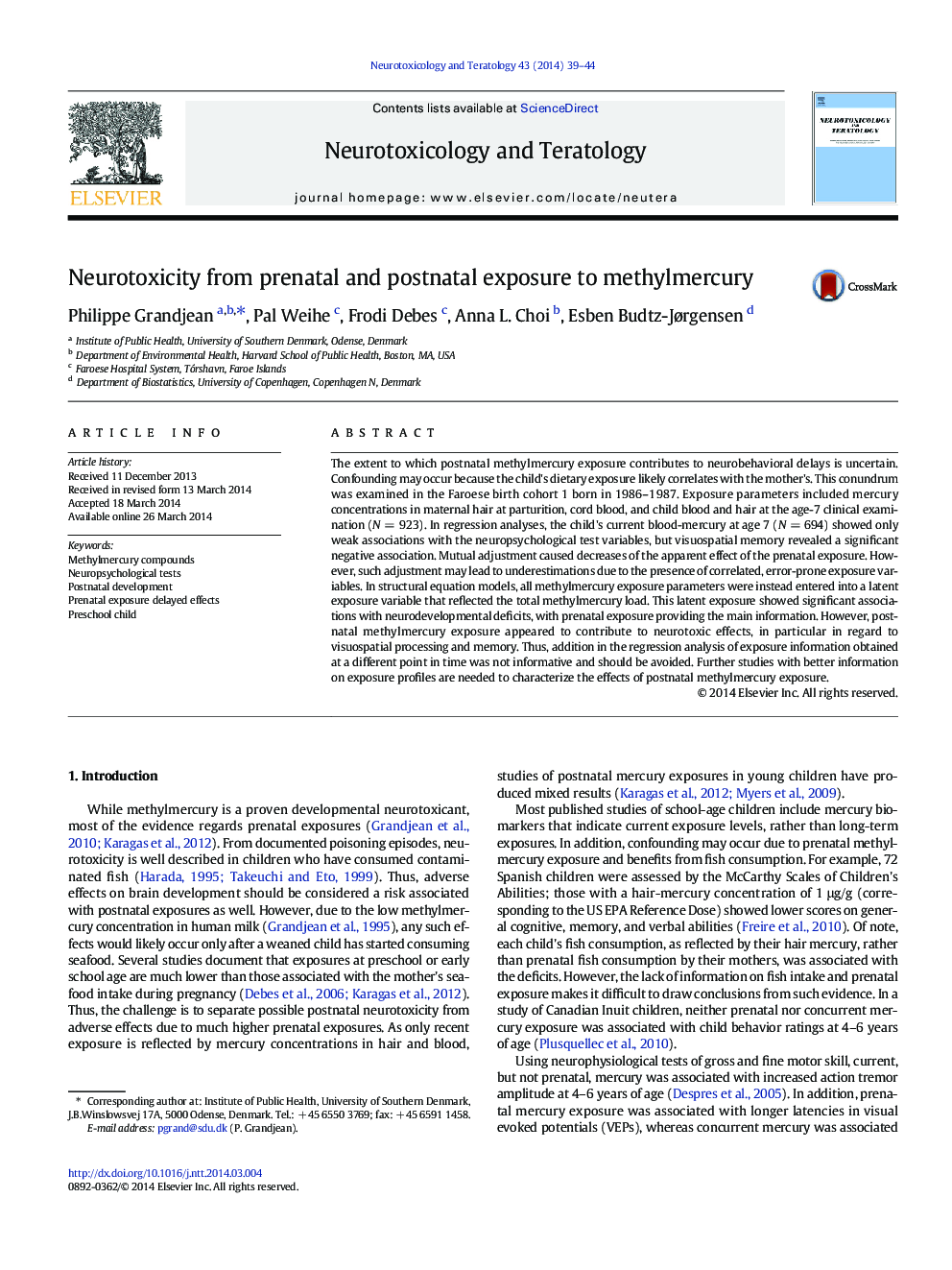| Article ID | Journal | Published Year | Pages | File Type |
|---|---|---|---|---|
| 2590953 | Neurotoxicology and Teratology | 2014 | 6 Pages |
•Prenatal exposure to methylmercury is known to cause a neurotoxicity risk.•Lower postnatal exposure is of uncertain risk and correlates with prenatal exposure.•Mutual adjustment of error-prone exposure variables appears inappropriate.•Postnatal visuospatial deficits are suggested by structural equation modeling.
The extent to which postnatal methylmercury exposure contributes to neurobehavioral delays is uncertain. Confounding may occur because the child's dietary exposure likely correlates with the mother's. This conundrum was examined in the Faroese birth cohort 1 born in 1986–1987. Exposure parameters included mercury concentrations in maternal hair at parturition, cord blood, and child blood and hair at the age-7 clinical examination (N = 923). In regression analyses, the child's current blood-mercury at age 7 (N = 694) showed only weak associations with the neuropsychological test variables, but visuospatial memory revealed a significant negative association. Mutual adjustment caused decreases of the apparent effect of the prenatal exposure. However, such adjustment may lead to underestimations due to the presence of correlated, error-prone exposure variables. In structural equation models, all methylmercury exposure parameters were instead entered into a latent exposure variable that reflected the total methylmercury load. This latent exposure showed significant associations with neurodevelopmental deficits, with prenatal exposure providing the main information. However, postnatal methylmercury exposure appeared to contribute to neurotoxic effects, in particular in regard to visuospatial processing and memory. Thus, addition in the regression analysis of exposure information obtained at a different point in time was not informative and should be avoided. Further studies with better information on exposure profiles are needed to characterize the effects of postnatal methylmercury exposure.
Graphical abstractFigure optionsDownload full-size imageDownload as PowerPoint slide
